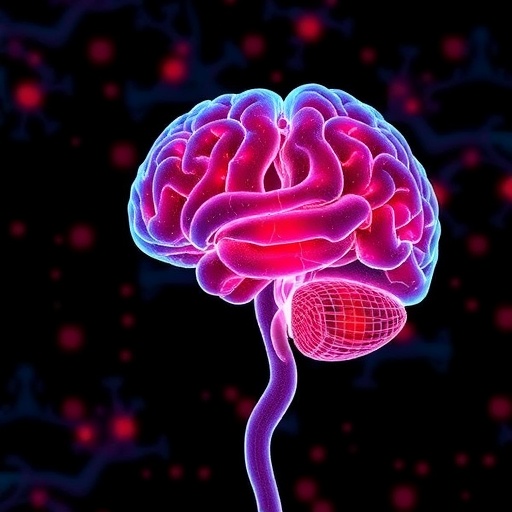In recent years, the intricate relationship between the gut and the brain has emerged as a captivating frontier in neuroscience and pediatric medicine, shedding new light on the elusive causes and burgeoning treatments for autism spectrum disorder (ASD) in children. Groundbreaking research spearheaded by Shin et al., published in the World Journal of Pediatrics in May 2025, delves deeply into the potential for therapies targeting the gut–brain axis to revolutionize ASD management. The study not only outlines promising therapeutic avenues but also candidly addresses the considerable challenges that lie ahead in translating these scientific insights into effective clinical applications.
Autism spectrum disorder is a neurodevelopmental condition characterized by a wide range of social, communicative, and behavioral impairments. Historically, ASD has been viewed through the lens of brain-centric neurobiology; however, growing evidence highlights a bidirectional communication network between the central nervous system and the gastrointestinal tract, known as the gut–brain axis. This axis comprises neural pathways, immune signals, metabolic interactions, and hormonal exchanges, all of which contribute to overall neurological development and function.
In children with ASD, gastrointestinal symptoms such as constipation, diarrhea, and abdominal pain are often disproportionately prevalent, suggesting that the gut environment might not only mirror systemic health but also actively influence neurodevelopmental outcomes. Shin and colleagues meticulously reviewed the molecular mechanisms underlying gut–brain communication, emphasizing the potential causative role of microbiota dysbiosis—imbalances in the diverse bacterial populations inhabiting the gut—in exacerbating or perhaps triggering ASD symptoms.
.adsslot_9h3SlG0Fgx{ width:728px !important; height:90px !important; }
@media (max-width:1199px) { .adsslot_9h3SlG0Fgx{ width:468px !important; height:60px !important; } }
@media (max-width:767px) { .adsslot_9h3SlG0Fgx{ width:320px !important; height:50px !important; } }
ADVERTISEMENT
One of the pivotal discussions within the article centers around the concept of microbial metabolites and their neuroactive properties. Short-chain fatty acids (SCFAs), neurotransmitter mimetics, and other microbial byproducts can cross the gut epithelium and modulate neuronal signaling pathways in the brain. For instance, imbalances in levels of butyrate or propionate have been correlated with altered behavior and cognitive impairment in animal models, providing a biochemical substrate for potential therapeutic targeting.
The authors also explore advanced microbiome-centric therapies, including fecal microbiota transplantation (FMT) and probiotic supplementation. While FMT has shown some promising preliminary results, the ethical, safety, and regulatory frameworks surrounding such interventions remain in their infancy, particularly in pediatric populations. On the other hand, specific probiotic strains engineered to restore microbial equilibrium and promote anti-inflammatory immune responses hold a more attractive profile for future treatment modalities, though rigorously controlled clinical trials are still lacking.
Another fascinating dimension covered in the paper is the modulation of the immune system as an adjunct or primary therapeutic strategy. Neuroinflammation has been implicated as a key pathological feature in ASD, linked intimately with gut permeability and systemic immune activation. Therapeutic agents targeting these inflammatory pathways, including specific immunomodulators and dietary interventions designed to reinforce the gut epithelial barrier, present innovative but complex solutions requiring further validation.
Shin et al. do not shy away from addressing the significant obstacles inherent in this field. The highly heterogenous nature of ASD, coupled with individual variability in gut microbiota composition and immune responses, complicates the establishment of standardized therapies. Additionally, the dynamic nature of both the developing brain and microbiome necessitates longitudinal studies to capture the temporal stability and efficacy of proposed interventions.
The article further delves into the cutting-edge realm of metabolomics and multi-omics approaches, positing that the integration of genomics, transcriptomics, proteomics, and metabolomics data could eventually enable personalized medicine strategies tailored to the unique gut–brain signatures of each child with ASD. Such precision psychiatry could optimize treatment responsiveness and minimize adverse effects, aligning with the overarching goals of modern biomedicine.
Moreover, the researchers highlight the importance of early diagnosis and intervention, arguing that modulating the gut–brain axis during critical windows of neurodevelopment may yield the most profound therapeutic benefits. This hypothesis is supported by emerging preclinical models demonstrating that early-life interventions can recalibrate microbial communities and attenuate behavioral deficits.
Importantly, the study also acknowledges the psychological and social implications faced by families of children with ASD, emphasizing that gut–brain axis-targeted therapies must be integrated within multidisciplinary care frameworks to maximize holistic outcomes. This includes combining medical treatment with behavioral therapy, nutritional counseling, and caregiver education to foster optimal long-term developmental trajectories.
The research by Shin and colleagues marks a watershed moment in ASD therapeutics, setting the stage for an era where pediatric neurodevelopmental disorders might be tackled not solely from within the brain but by harnessing the biochemical dialogue coursing through the gut. Their comprehensive review charts a roadmap filled with tantalizing possibilities while underscoring the necessity for robust scientific validation to bridge experimental insights with clinical realities.
With the gut microbiome interface emerging as a key node in neurodevelopment and disease, this study invigorates the scientific community’s efforts to decode the gut–brain axis as a therapeutic target. It simultaneously invites a broader conversation about the ethical, methodological, and societal dimensions of deploying such innovative medical approaches in vulnerable pediatric populations, making it a seminal piece in the evolving narrative of autism research and treatment.
As more research unfolds, the promise of gut–brain axis-targeted therapies for children with ASD may ultimately transform the clinical landscape, offering new hope to millions of families worldwide. This pioneering work thus stands as a clarion call to harness the synergy of microbiology, immunology, neurology, and pediatrics in a unified quest to unravel and treat autism’s mysteries from an unprecedented vantage point.
Subject of Research: Potential gut–brain axis-targeted therapies for autism spectrum disorder in children
Article Title: Potential gut–brain axis-targeted therapies for autism spectrum disorder in children: opportunities and challenges
Article References:
Shin, M.K., Son, Y., Yon, D.K. et al. Potential gut–brain axis-targeted therapies for autism spectrum disorder in children: opportunities and challenges. World J Pediatr 21, 447–467 (2025). https://doi.org/10.1007/s12519-025-00924-4
Image Credits: AI Generated
DOI: May 2025
Tags: autism management strategiesautism spectrum disorder treatment innovationsbidirectional communication in neurodevelopmentchallenges in autism therapiesclinical applications of gut therapiesgastrointestinal symptoms in autismGut-brain axis therapies for autismneurobiology of autism spectrum disorderneurological development and gastrointestinal healthpediatric autism gut healthpediatric medicine advancementsShin et al. autism research





